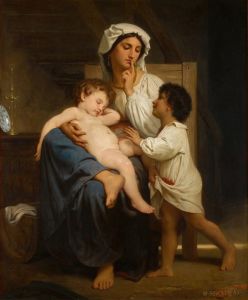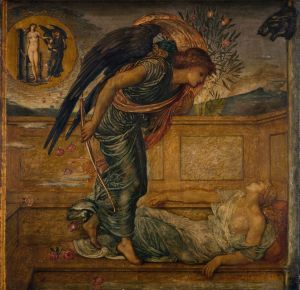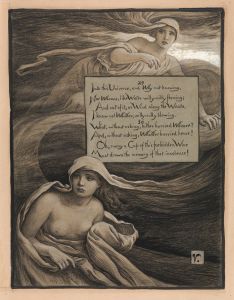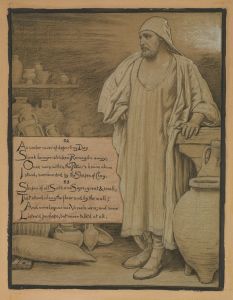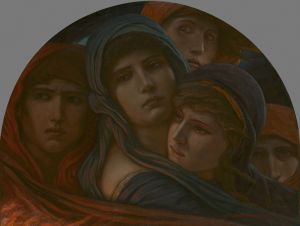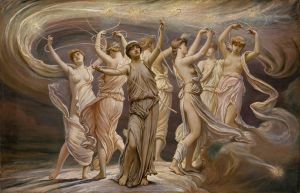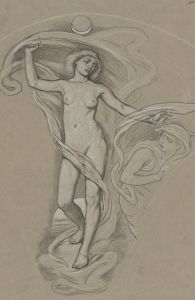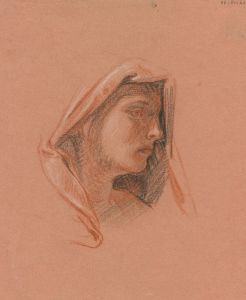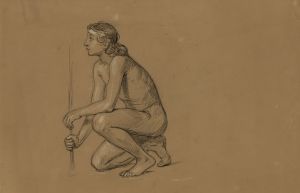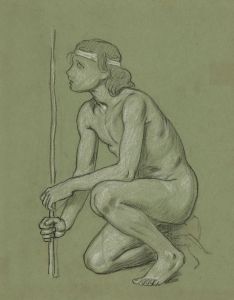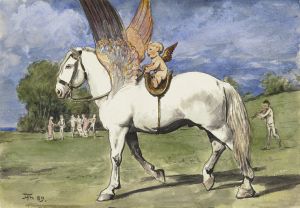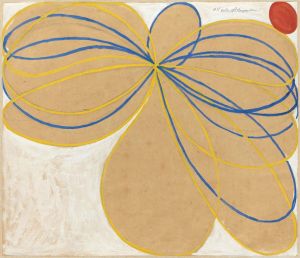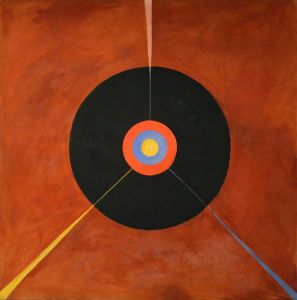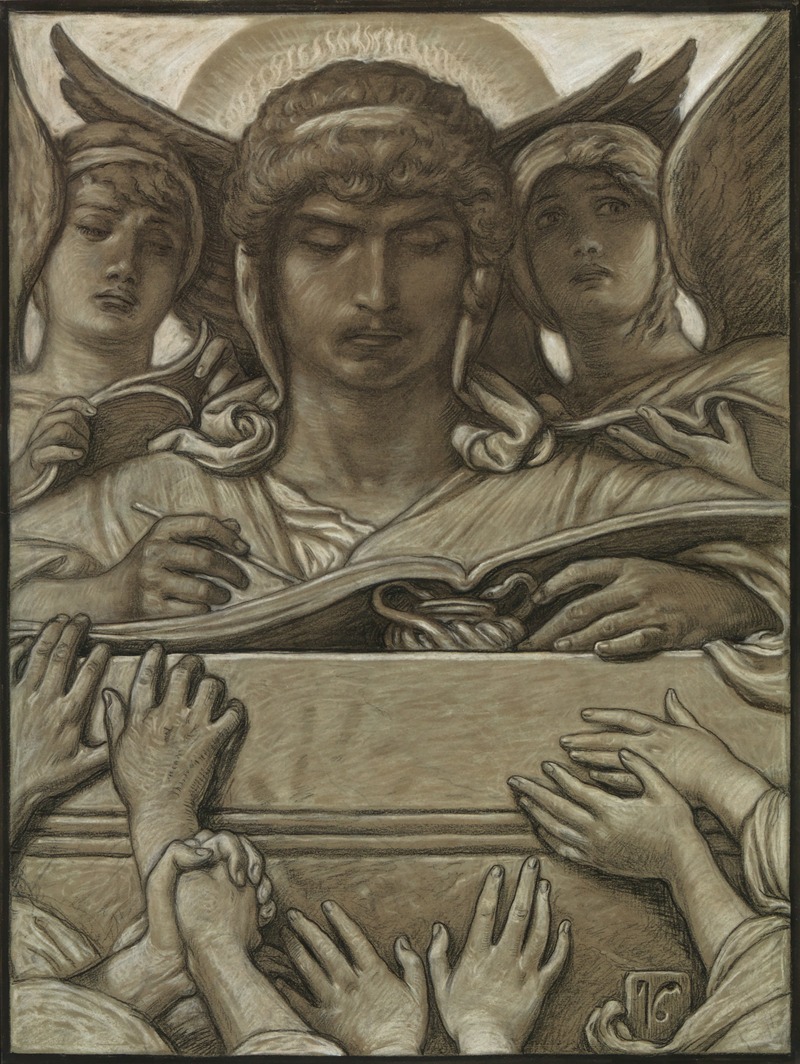
The Recording Angel
A hand-painted replica of Elihu Vedder’s masterpiece The Recording Angel, meticulously crafted by professional artists to capture the true essence of the original. Each piece is created with museum-quality canvas and rare mineral pigments, carefully painted by experienced artists with delicate brushstrokes and rich, layered colors to perfectly recreate the texture of the original artwork. Unlike machine-printed reproductions, this hand-painted version brings the painting to life, infused with the artist’s emotions and skill in every stroke. Whether for personal collection or home decoration, it instantly elevates the artistic atmosphere of any space.
Elihu Vedder's "The Recording Angel" is a notable work by the American symbolist painter and illustrator, created in the late 19th century. Vedder, known for his mystical and allegorical themes, often explored profound philosophical and existential questions through his art. "The Recording Angel" is a prime example of his interest in symbolism and the metaphysical.
Elihu Vedder was born in New York City in 1836 and spent much of his career in Italy, where he was influenced by the Renaissance and classical art, as well as the burgeoning symbolist movement. His work often reflects a blend of these influences, characterized by a dreamlike quality and a focus on the spiritual and the otherworldly.
"The Recording Angel" depicts an angelic figure, traditionally believed to be responsible for recording the deeds of humans, a concept found in various religious and mythological traditions. This theme aligns with Vedder's interest in the intersection of the divine and the mortal, as well as the moral and ethical implications of human actions.
The painting is executed with Vedder's characteristic attention to detail and use of muted, earthy tones, which lend a timeless and ethereal quality to the work. The angel is typically portrayed with a serene and contemplative expression, holding a book or scroll, symbolizing the recording of human deeds. This imagery invites viewers to reflect on the nature of accountability and the eternal consequences of one's actions.
Vedder's work, including "The Recording Angel," often features a strong narrative element, encouraging viewers to engage with the story and symbolism presented in the artwork. His paintings are known for their intricate compositions and the use of light and shadow to create depth and mood, drawing the viewer into the contemplative world he creates.
"The Recording Angel" is part of Vedder's broader body of work that includes illustrations for literary works, such as his famous illustrations for Edward FitzGerald's translation of "The Rubaiyat of Omar Khayyam." These illustrations further demonstrate his skill in merging visual art with literary themes, creating a rich tapestry of meaning and interpretation.
Elihu Vedder's contributions to the symbolist movement and his unique artistic vision have earned him a place in the history of American art. His works, including "The Recording Angel," continue to be studied and appreciated for their depth, complexity, and beauty. They offer a window into the philosophical and artistic currents of the late 19th century, reflecting the era's fascination with the mystical and the metaphysical.
While specific details about the provenance and current location of "The Recording Angel" may not be widely documented, Vedder's legacy as a symbolist painter remains influential. His exploration of themes such as fate, morality, and the divine continues to resonate with audiences, making his work a subject of enduring interest and scholarly study.





